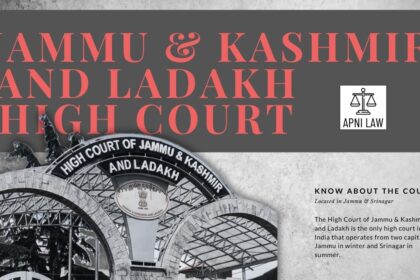Introduction
The Right to Property has been one of the most debated subjects in India’s constitutional evolution. Originally enshrined as a Fundamental Right under Articles 19(1)(f) and 31 of the Indian Constitution, it guaranteed every citizen the freedom to acquire, hold, and dispose of property. However, this right underwent significant transformation over time. Today, it exists as a legal right under Article 300A.
This journey from being a core Fundamental Right to becoming a legal right, reflects India’s struggle to balance individual ownership with the larger goal of social and economic justice. The change represents a shift in priorities: from protecting private wealth to ensuring equitable distribution of resources.
Historical Background
At the time of independence, the Constituent Assembly viewed the Right to Property as essential for personal liberty. Many members believed that ownership of property was integral to individual freedom. Consequently, Article 19(1)(f) guaranteed the right to acquire, hold, and dispose of property, while Article 31 protected against deprivation of property without authority of law and mandated compensation for any acquisition by the State.
However, as India embarked on land reforms to abolish zamindari and redistribute land among peasants, this right became a roadblock. Wealthy landowners challenged government actions, claiming violation of their fundamental rights. The resulting tension between social reform and property rights set the stage for constitutional conflict.
Early Judicial Interpretations
The Supreme Court initially interpreted the Right to Property broadly. In State of West Bengal v. Bela Banerjee (1954), the Court held that the State must pay “just compensation” when acquiring private property. This ruling made it difficult for governments to implement land reform policies.
To counter such judgments, Parliament passed several constitutional amendments. The First Amendment (1951) placed land reform laws under the Ninth Schedule, protecting them from judicial review. Later, the Fourth (1955) and Seventeenth (1964) Amendments further limited the Court’s power to review compensation.
These developments highlighted a growing conflict between individual rights and social justice. The government argued that property rights should not obstruct the redistribution of land and wealth necessary for achieving equality.
The Turning Point: 44th Constitutional Amendment Act, 1978
The Emergency (1975–77) period and the political climate that followed drastically changed India’s approach to property rights. The Janata Government, through the 44th Constitutional Amendment Act of 1978, removed the Right to Property from the list of Fundamental Rights.
Articles 19(1)(f) and 31 were repealed, and a new provision Article 300A was inserted in Part XII of the Constitution. It states:
“No person shall be deprived of his property save by authority of law.”
This amendment transformed the Right to Property from a Fundamental Right to a legal right. It means that citizens can still own property, but they cannot claim constitutional protection under Part III. Any violation must now be challenged under ordinary law, not through writ petitions under Article 32.
Present Legal Status under Article 300A
Article 300A ensures that a person cannot be deprived of property except through a law made by the legislature. This means that the State cannot take away property arbitrarily. The right is still protected, but the protection is weaker than before.
Citizens can approach High Courts under Article 226 if their property is taken unlawfully, but they cannot directly move the Supreme Court under Article 32. Moreover, compensation is no longer a constitutional requirement—Parliament may decide whether or not to provide it.
The Supreme Court clarified this in Jilubhai Nanbhai Khachar v. State of Gujarat (1995), holding that the State can acquire property for public purposes if it passes a valid law. The Court also ruled that compensation need not always be equal to the market value, as long as the law is not arbitrary.
Major Cases Influencing the Right to Property
1. Kameshwar Singh v. State of Bihar (1952)
This was among the earliest cases challenging land reforms. The Patna High Court struck down parts of the Bihar Land Reforms Act, saying it violated the Right to Property. The judgment illustrated how difficult it was for post-independence India to pursue equitable land distribution.
2. Kesavananda Bharati v. State of Kerala (1973)
In this landmark case, the Supreme Court held that Parliament could amend any part of the Constitution but could not alter its basic structure. While the case primarily focused on the power of amendment, it indirectly influenced the debate over property rights.
3. Waman Rao v. Union of India (1981)
The Court upheld the validity of the 44th Amendment, confirming that the Right to Property was no longer fundamental but still a constitutional legal right.
4. Jilubhai Nanbhai Khachar v. State of Gujarat (1995)
This judgment reaffirmed that deprivation of property must be based on valid law and not executive action. It strengthened the interpretation of Article 300A as a safeguard against arbitrary State action.
Social and Economic Rationale Behind the Change
The removal of the Right to Property as a Fundamental Right was rooted in India’s socialist ideology and commitment to economic equality. The government viewed unrestricted property rights as an obstacle to reforms like land redistribution, industrial nationalization, and welfare schemes.
The 44th Amendment thus aimed to prioritize collective welfare over individual ownership. It reflected the idea that property should serve public good, not private accumulation. This change helped the government pursue agrarian reforms, housing schemes, and infrastructure projects without facing constant legal challenges.
However, critics argue that reducing property rights weakened constitutional protection against State overreach. They believe that while land reforms were necessary, the right to own property should have retained stronger legal safeguards to prevent misuse by authorities.
Impact of the Shift
The shift from Fundamental to Legal Right had both positive and negative outcomes. On one hand, it allowed the government to implement development projects more freely. On the other hand, citizens lost the ability to directly challenge arbitrary property acquisition in the Supreme Court.
Over the years, courts have continued to ensure that property rights are not violated without due process. In Delhi Airtech Services v. State of U.P. (2011), the Supreme Court held that even under Article 300A, deprivation of property without fair procedure is unconstitutional.
Thus, while property rights are no longer “fundamental,” they still hold substantial constitutional importance.
FAQs
1. Why was the Right to Property removed as a Fundamental Right?
It was removed to facilitate land reforms and prevent property rights from obstructing social and economic justice. The 44th Amendment of 1978 downgraded it to a legal right.
2. What is the difference between a Fundamental Right and a Legal Right?
A Fundamental Right is guaranteed by the Constitution and enforceable by the Supreme Court under Article 32. A Legal Right, on the other hand, can only be enforced under ordinary law, usually through High Courts.
3. Can the government still acquire private property?
Yes, but it must do so through a valid law and for a public purpose. The process must be fair, and the State cannot act arbitrarily.
Conclusion
The Right to Property has evolved from being a symbol of individual freedom to an instrument of social justice. Its transformation from a Fundamental Right to a Legal Right through the 44th Amendment reflects India’s changing socio-economic priorities.
While individuals no longer have absolute constitutional protection, the right continues to exist under Article 300A, ensuring that no one can be deprived of property without legal authority. This balance between private ownership and public welfare remains central to India’s constitutional philosophy, one that seeks to protect individual rights while promoting collective progress.








